
With the development of new energy, autonomous driving, and artificial intelligence technologies, the level of intelligence in the automotive industry has also increased. As the "crown jewel" in the field of artificial intelligence, how does decision-making intelligence promote the digital transformation of the automotive industry? What are the pain points and solutions for the actual implementation of decision-making intelligence? This article will combine ten years of personal data analysis experience and introduce the practical exploration and experience summary of operations optimization in the automotive industry from a practical perspective. I hope to bring help and inspiration to everyone's work. This sharing session will focus on the following four points:
The automobile industry chain can be divided into cores Four pieces, one piece covers the R&D and technology throughout the entire industry chain, from the procurement of parts to the manufacturing, sales and after-sales service of the automobile. The other part is the procurement of parts. Generally, an automobile company will have the support of many auto parts companies, which is very important. The third area is the vehicle manufacturer. For the vehicle manufacturer, general parts are supported by suppliers, and core components, such as engines and gearboxes, are produced by themselves. The fourth block is sales and service. The traditional sales model has a dealer, and then the dealer distributes to various customers. Now there is a direct sales model. After the sale, there will be after-sales and insurance services, including after-sales maintenance, insurance, second-hand cars and a series of after-sales services.
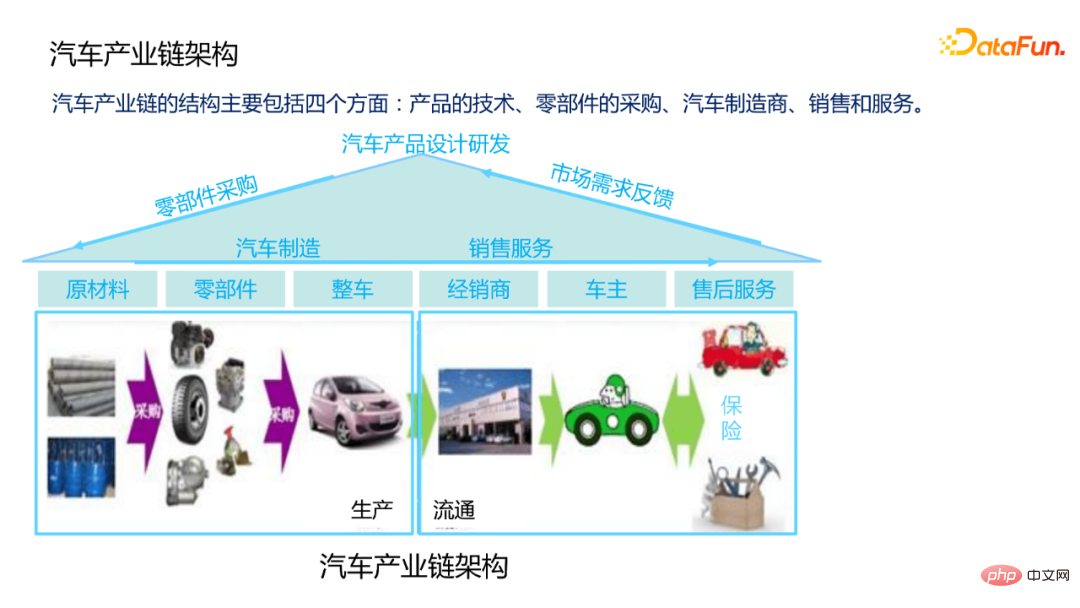
The automobile industry chain is very long, so there will also be various artificial intelligence technologies that can play a role . For example, some knowledge graphs can be constructed for automobile parts. In terms of manufacturing and quality, there are predictive maintenance and defect detection, as well as invoice identification during the car sales process, and identification of automobile decorative parts, etc., where artificial intelligence technology can be used. From data statistical analysis, machine learning, to various technologies in the field of artificial intelligence such as natural language processing, knowledge graphs, intelligent interaction, and computer vision, many application scenarios can be found in the automotive industry chain. As many car manufacturing companies join the automotive industry, and as new energy and autonomous driving technologies advance, the automotive industry will become increasingly intelligent.
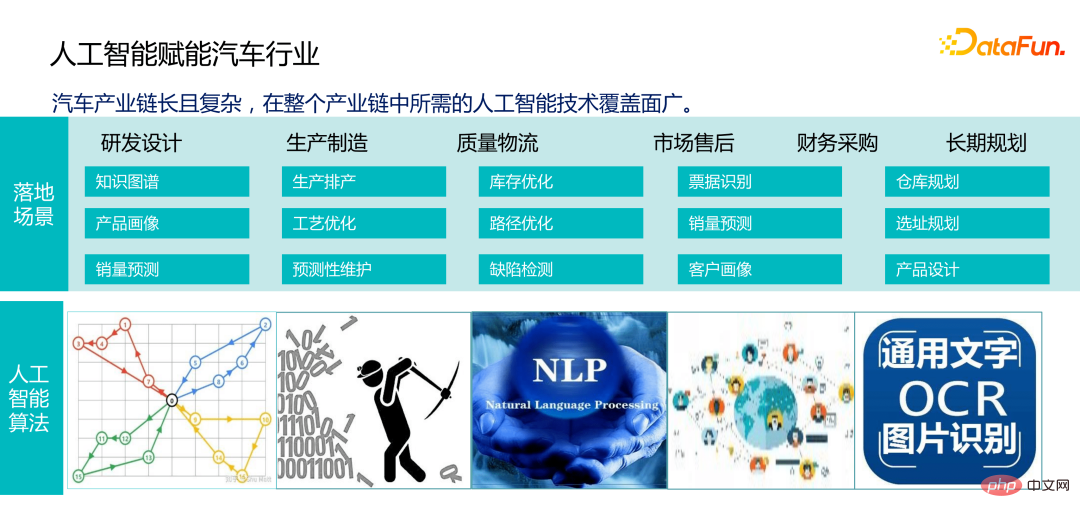
Operations optimization is to find the optimal decision that can optimize one or several goals under the constraints.Operations research optimization is divided into two key steps, modeling and solving. The first step of modeling is to turn the actual problem into a mathematical optimization model. The model contains some key elements, including decision variables, goals and constraints, etc. The next step is to solve. The solution involves many optimization algorithms, some of which are for exact solutions, and some of which are for inexact solutions, which involve different optimization algorithms. There are many traditional applications of operations research, such as path optimization, location optimization, supply chain optimization, network layout, etc.
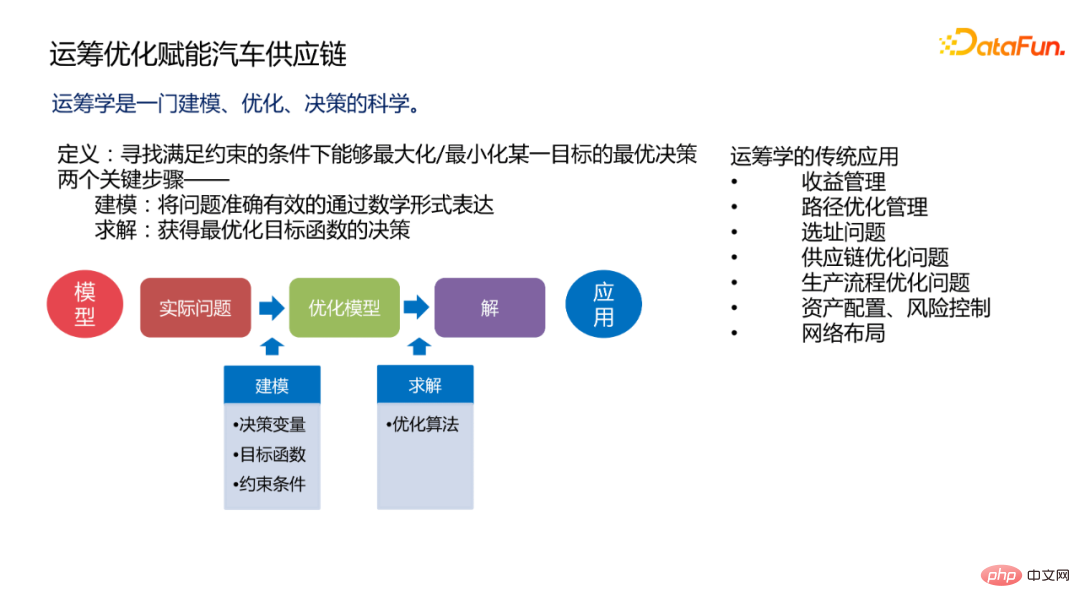
The following introduces the application ofoperations optimization in the automotive supply chain. In terms of terminal demand collection, for example, the new energy points policy affects the long-term planning of automobiles, and how to plan automobiles to meet national policy requirements. In terms of R&D and design, such as production scheduling, inventory management in R&D and design, vehicle allocation strategies in order management, and transportation planning and scheduling in logistics and transportation.According to the decision-making level and scope of practical applications, application scenarios in the automotive field can be divided into three levels:
In short, from all levels, the strategic level is biased towards optimal optimization; the planning level is in terms of optimality, timeliness and stability. There are certain requirements in terms of performance; at the execution level, the requirements for optimality are relatively weak, and the requirements for timeliness and stability are relatively high.

Let’s share three examples of operations optimization.
Optimization of machining process plan, when designing a machining plan for an engine, the traditional machining process It takes dozens of senior engineers and several months of manual programming to complete the programming of an engine. The workload is huge. As a result of the programming, only a feasible solution can be found, but there is no way to find an optimal solution. This machining problem can be mathematically modeled to obtain an optimal solution, which can reduce 80% of the choreography work in practical applications. This is a mid- to long-term plan, and the goal is mainly cost optimization. This goal requires an accurate solution. The scale is relatively large. After the mathematical model is built, a solver will be used to help solve it.
The second example is the optimization of production plans, such as parts production, test vehicle production, and complete vehicle production Production all requires production planning. Production lines in the automotive field all require production planning. Generally, the goal of production planning is the balance of production, such as color balance, configuration balance, daily balance, monthly balance, etc. At the same time, the optimization of this kind of production plan also has requirements for performance. Because there are so many factories, each factory may have planners to arrange the production plan. They also have certain requirements for time response. This generally requires the use of an integer programming model. s solution.
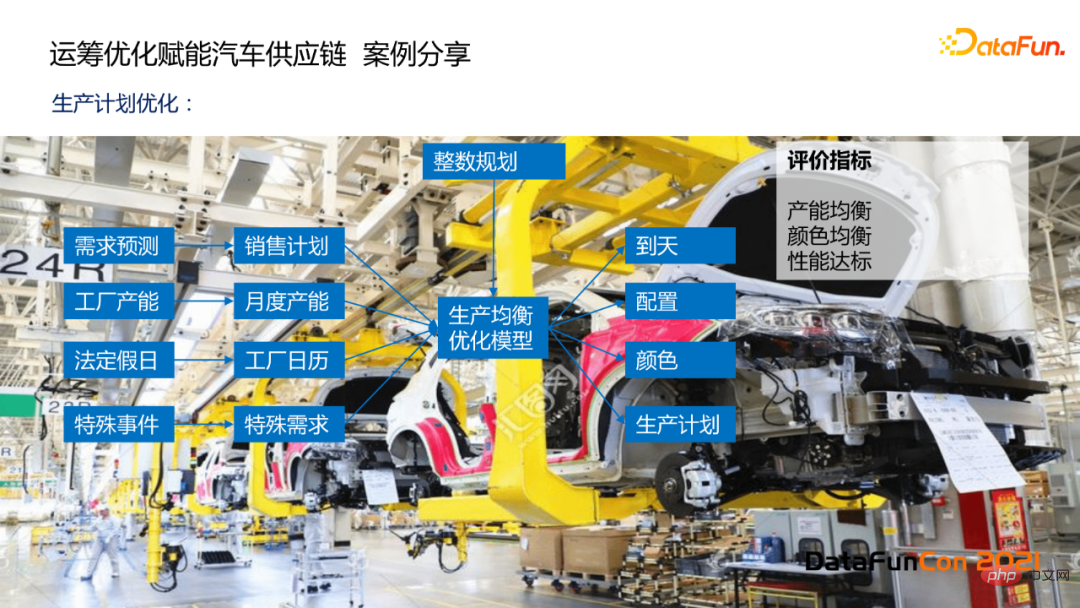
The third example is inventory optimization. The costs of warehouse inventory, dealer inventory, vehicle inventory, and parts inventory are all very high. Generally, the inventory must be kept as low as possible while meeting a certain service level. The previous traditional model was to use an inventory optimization model to comprehensively predict sales volume, average demand, satisfaction rate targets, out-of-stock costs, etc. to build an inventory optimization model, and finally output safety stock, target inventory levels, order plans, and reorder points. Nowadays, inventory optimization is generally done based on traditional methods and combined with machine learning algorithms.
 03Difficulties in the implementation of operations optimization projects
03Difficulties in the implementation of operations optimization projects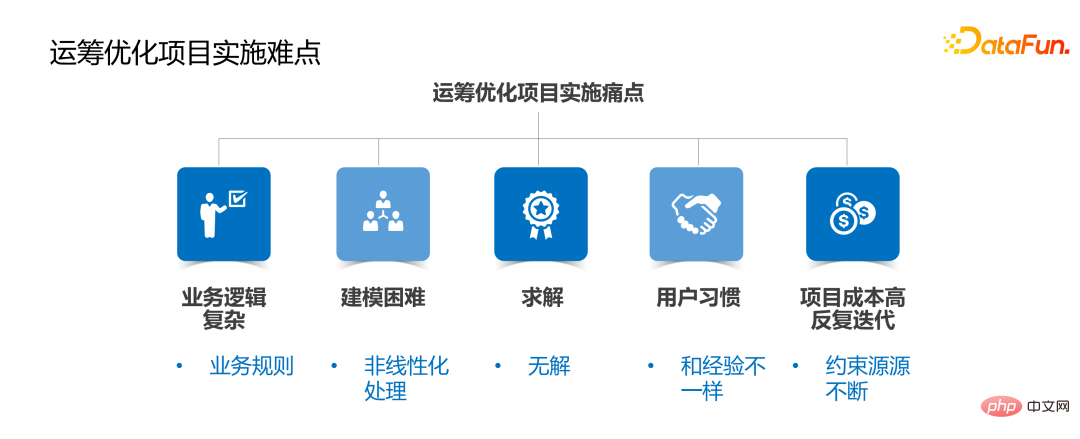
Operations optimization project implementation From the perspective of the process from concept verification to the implementation of this project, the main points are as follows:
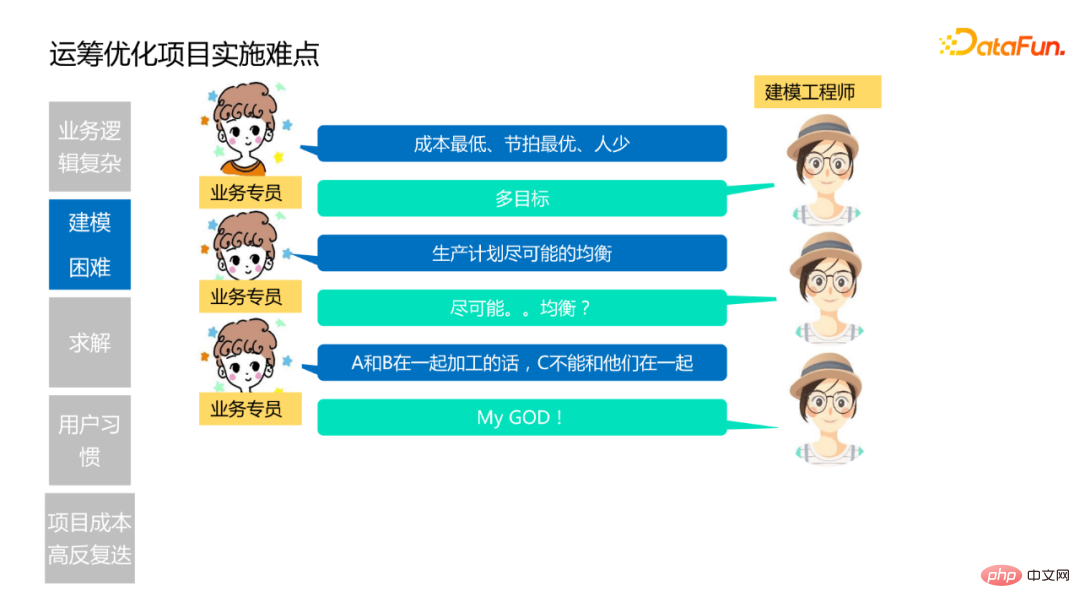


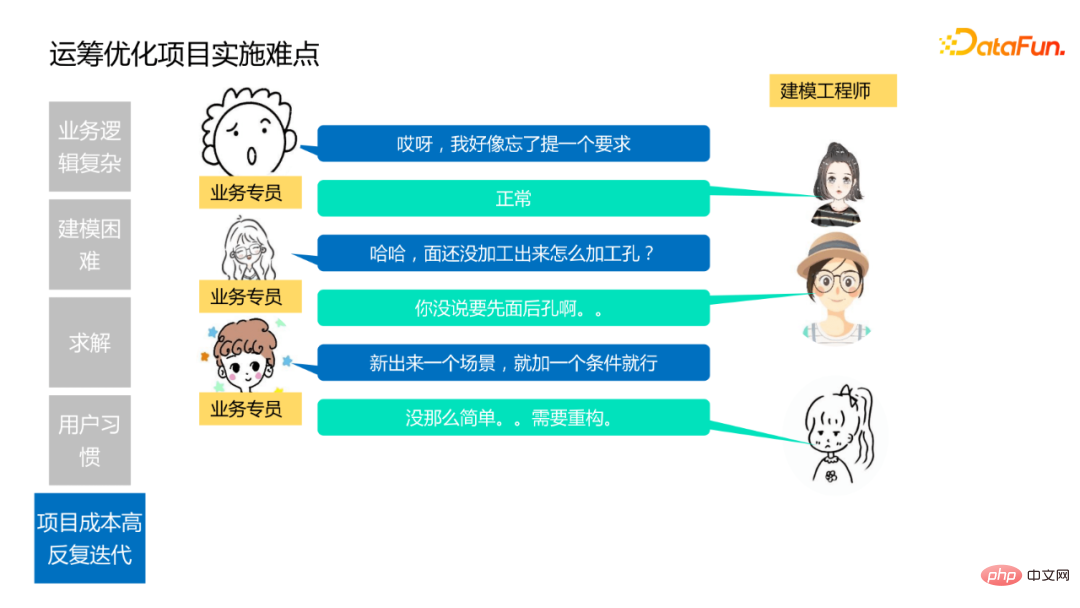
The following is a summary of the different stages of the project.
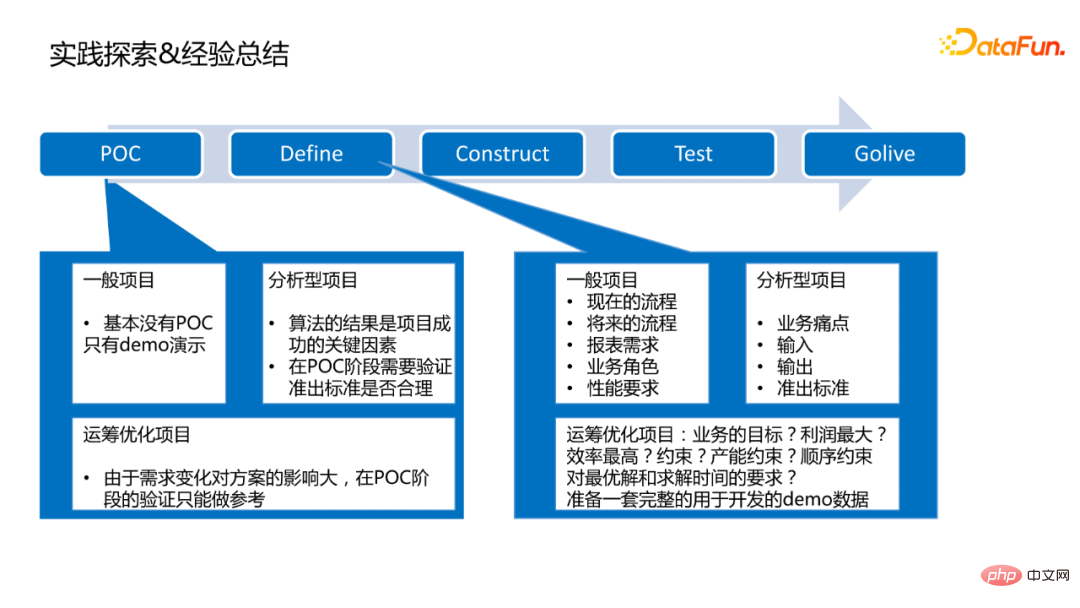
POC stage It is a proof of concept done before the project is implemented.

Q: When doing production planning How is the order insertion plan implemented?
A: The order insertion plan is during the production planning process, and a new plan suddenly comes. Production plans are generally based on weeks. If a planning point has been passed within a week, no order will be considered. However, fixed long-term requirements, such as "color production volumes for certain weeks need to be locked in advance" can be placed in the model and can be placed in the model as constraints. But if this week has been produced as planned, the production plan has taken effect, and it is just a temporary order insertion, there is no need to put it in the model, and it may need to be adjusted manually.
#Q: What is the current situation of logistics applications in automobile companies? When the results obtained by the general algorithm are contrary to the experience of the salesperson, can the results obtained by the algorithm be promoted? The actual effect after advancement. How is it generally?
#A: There are two questions here. The first one is what is the current application status of operations research applications in the automotive industry? The second is the experience of what to do if there is a conflict between the model results and the user's experience.
# Let me talk about the first question first. I personally think that the application scenario of logistics optimization in the automotive industry is the most complex in the entire industry, including various e-commerce industries. of. Various scenarios found in other industries can be found in the automotive industry, and the implementation situation is different for each manufacturer. If the factory has been established for a long time, the data accumulation is relatively rich, and the basic systemization is relatively mature, the implementation of operations optimization will be easier. But there may also be problems with old equipment. For example, the equipment in some workshops is relatively old, and the extracted data does not have timely feedback, making real-time scheduling difficult.
#The second question is, if the optimization results conflict with the user, both the modeler and the user need to compromise. Because modeling also has some limitations, some complex business scenarios need to be simplified before a mathematical model can be implemented. If a business user insists on doing things according to his habits, the result may be the same as his habits, without any optimization. In addition, modelers also need to understand from a business perspective. Users really need this kind of operation, and they should try to think of as many ways as possible to help them. Therefore, based on the above, a successful operations optimization project requires coordination between the demand side and the implementation side. Only when multiple parties work together around a common goal can a relatively successful project be built.
#Q: What is the application situation of robust optimization in inventory management and replenishment links in the automotive industry?
#A: Inventory optimization in the automotive industry has different treatments for different situations, such as mature parts, new parts, parts with low demand, etc. If it is a mature part, it is basically based on the demand predicted in time series, based on the distribution variance of demand, and in accordance with inventory theory, it is enough to make target inventory levels and safety stocks.
For parts with low demand, dealers will only consume one part every month or half a year. Generally, there is only one in stock. Basically, there is no need for any theory. If one falls, replace it with another. In practice, not all theories are directly used. There will be a more flexible way, which needs to be combined with business restrictions, valuable practical experience and other aspects to deal with this problem.
The above is the detailed content of Application practice of intelligent decision-making technology in the automotive industry. For more information, please follow other related articles on the PHP Chinese website!
 How to bind data in dropdownlist
How to bind data in dropdownlist Solution to java report that build path entries are empty
Solution to java report that build path entries are empty How to solve errors encountered in geforce experience
How to solve errors encountered in geforce experience The function of net user command
The function of net user command What are the core technologies necessary for Java development?
What are the core technologies necessary for Java development? How to implement h5 to slide up and load the next page on the web side
How to implement h5 to slide up and load the next page on the web side Is there a big difference between c language and Python?
Is there a big difference between c language and Python? velocitytracker usage
velocitytracker usage



